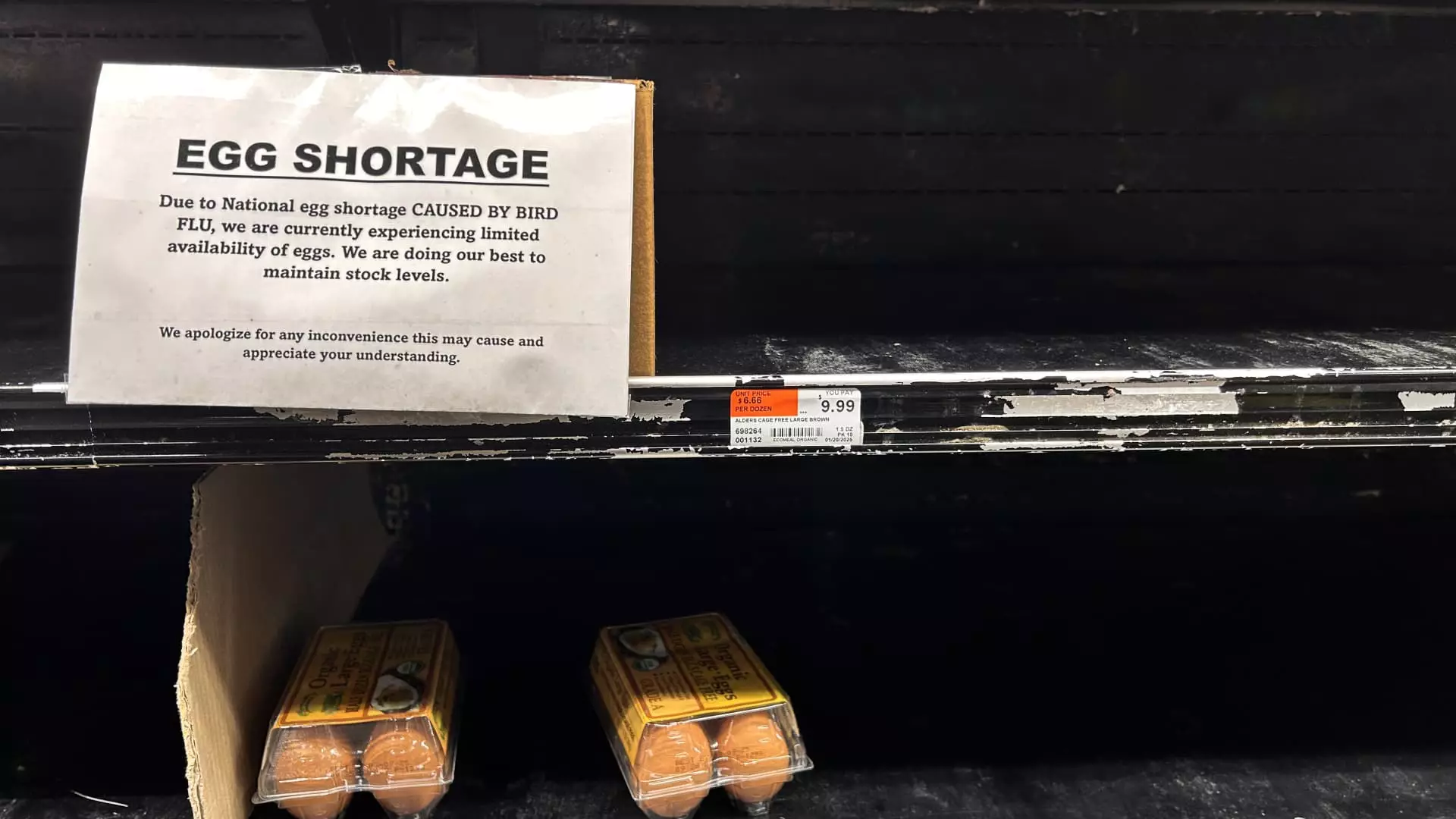The price of eggs has skyrocketed to unprecedented levels in the United States, driven primarily by a devastating outbreak of bird flu that has decimated poultry populations, particularly egg-laying hens. As retailers brace for heightened prices, consumers are likely to feel the pinch at the checkout counter, leading to broader discussions about food security, agricultural economics, and the ripple effects of disease on the food supply chain.
As of recent reports, the wholesale price for large, white shell eggs has surged to an astonishing $8 per dozen, far exceeding the previous record of $5.46 set in late December 2022. Analysts like Ryan Hojnowski of Expana note that this exponential rise can be traced back to severe supply shortages catalyzed by the avian influenza crisis. The delay between wholesale price hikes and retail price adjustments means consumers may not yet fully grasp the financial implications of these fluctuations. Many retailers, including chains like Trader Joe’s and Costco, have already begun implementing purchasing limits to mitigate consumer panic-buying and manage stock depletion.
As a reflection of this inflation, the average retail price for a dozen eggs remained around $4.15 in December, which, although lower than the peak of $4.82 seen in January 2023, still signifies a staggering 65% increase from December 2022’s average of $2.51. The juxtaposition of declining overall inflation against the rising costs of eggs only adds to the disquiet for consumers already grappling with tight budgets.
The primary culprit behind the meteoric rise in egg prices is the highly pathogenic avian influenza (HPAI). This virus is notoriously contagious among birds, necessitating the mass culling of infected flocks to prevent further spread. Experts estimate that over 40 million egg-laying chickens were lost to the disease in 2024 alone, representing approximately 13% of the U.S. national laying flock. The implications of this decline are stark: fewer hens equate to a significantly reduced supply of eggs, which directly correlates with higher prices.
Additionally, inventories are reported to be approximately 15% to 16% below the five-year average, exacerbating the situation further. The seasonal nature of egg consumption, particularly during holidays when baking is prevalent, heightens the urgency of these supply challenges. The high demand during such periods collides with the already constrained supply, leading to price spikes that can be jarring for consumers.
The response to rising costs differs significantly across types of retailers. Large national chains like Walmart and Aldi often have greater flexibility to absorb the shocks of rising wholesale prices. Their ability to negotiate fixed-price contracts and cover losses through stronger profit margins on other products allows for a more measured retail price adjustment.
Conversely, smaller, independent retailers tend to react more swiftly to wholesale price increases, as they lack the economies of scale that larger chains enjoy. This can result in faster price hikes at local stores, further complicating the consumer experience. As prices at grocery stores climb, the fast-casual dining sector is also feeling the repercussions, with chains like Waffle House introducing surcharges for egg dishes—reflecting the compounded costs of ingredients linked to fluctuating egg prices.
Looking ahead, the persistence of bird flu outbreaks poses a continued threat to the availability of egg-laying chickens. With more losses reported as recently as 2025, the expectation is that the price for eggs may remain elevated for the foreseeable future. Comparatively, average retail egg prices surged by roughly 170% from 2019 to 2024, revealing a stark contrast with other poultry products, where prices have increased much more moderately.
As consumers adapt to this new reality, it’s imperative to consider the broader agricultural framework and the importance of biodiversity in poultry farming. Ensuring better biosecurity measures and vaccines for poultry could be critical in mitigating future risks associated with such outbreaks.
Ultimately, the current situation serves as a poignant reminder of the fragility of our food supply systems—a reminder that, while prices are dictated by immediate circumstances, the underlying causes often stretch deeper into the agricultural practices, health of livestock, and the economics of food distribution.

